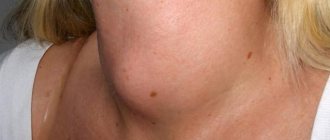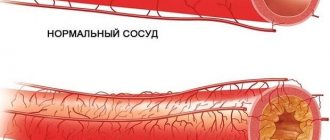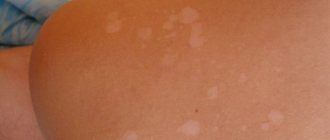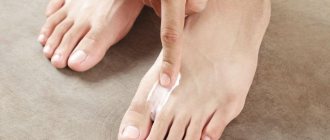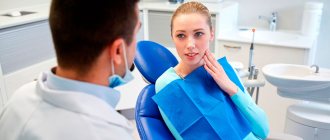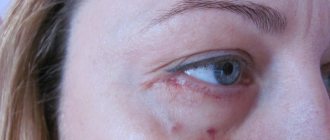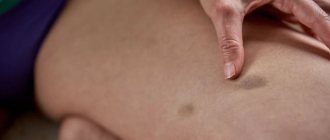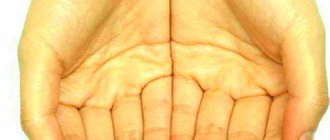Hyperpigmentation is a focal or diffuse deposition of pigment on the skin, which leads to darkening of individual areas or the entire surface of the body. The formation of melanin, which is responsible for the appearance of pigmentation, occurs as a result of the body's protective function in response to sunlight. But excessive release of melanin is not always due to physiological processes. This is often evidence of the presence of pathologies.
Causes of hyperpigmentation
There are more than a dozen reasons for hyperpigmentation. The main reason is tanning, which causes photoaging. When the skin is irradiated with ultraviolet rays, melanin begins to be actively produced in melanocytes, which are cells in the layers of the epidermis. And excess pigment deposition leads to darkening of the skin and the appearance of spots on it.
Tanning is a relatively harmless cause of external skin changes. But besides him, there are others.
Table 1. Causes of hyperpigmentation and its pathogenesis.
| Name | Brief rationale |
| Vitamin deficiency | A lack of vitamin B12 leads to darkening of the skin. It prevents the appearance of blemishes by regulating the synthesis of the pigment melanin. Vitamin A is responsible for dark color bleaching. Vitamin E deficiency increases the risk of skin damage due to overexposure to the sun |
| Skin injuries | Damage in the form of: acne, burns, furunculosis, surgery, fungal or infectious diseases can trigger post-inflammatory hyperpigmentation. The same thing sometimes happens after blepharoplasty. This is due to active cell division in the affected areas. New skin is more sensitive to direct sunlight, so it darkens quickly. And intense tanning can cause hyperpigmentation. |
| Diseases of the gallbladder, liver | In this case, lipid metabolism is disrupted. As a result, pigment spots may form on the face, stomach, back, palms and other parts of the body. |
| Age-related changes | Hyperpigmentation can appear at a young age. But for older people this is a common occurrence. External changes are associated with long-term exposure of the skin to ultraviolet rays, as well as the presence of chronic diseases |
| Housing and communal services diseases | Intestinal dysfunction provokes disruptions in the functioning of metabolic processes in the body. This may result in hyperpigmentation. |
| Hormonal disorders | Functional disturbances in the functioning of thyroid hormones and the endocrine system as a whole sometimes lead to the appearance of lesions in the form of dark pigment spots on the face (lips, eyelids, around the eyes, on the forehead near the hair, on the nose, cheeks), shoulders, chest. The same thing happens during menopause, pregnancy, puberty, when melanin synthesis increases markedly. This also applies to taking oral contraceptives |
| Kidney disease | If there are problems with the kidneys, the skin often acquires a yellow-brown tint. |
| Stress, nervous system diseases | Under stress, pigmentation may also appear due to a weakening of the body's protective functions. |
| Intoxication | When taking medications, some of the active components contained in them accumulate in the body. They are able to provoke an increase in melanin synthesis. But not only medications can cause hyperpigmentation, but also natural ingredients, herbs, and plants. |
| Heredity | The disease can manifest itself in the presence of a genetic predisposition. In this case, melanosis occurs, that is, a pathology associated with a disorder of pigment. Melanosis can be acquired, but most often it is transmitted genetically |
| Cosmetics and care | Photosensitizers included in some cosmetics provoke an increase in the skin's susceptibility to solar radiation, causing hyperpigmentation. It can also occur after depilation (unsuccessful, incorrect), including after sugaring. The use of cosmetics often causes spots on the body |
| Varicose veins | Because of this disease, a rash often appears on the lower extremities. |
Other causes of hyperpigmentation include alcohol abuse, poor diet, and smoking.
Dark spots
Age spots are changes in skin color that appear as hyperpigmentation patches—brown spots on the skin. There may be pigment spots on the face and pigment spots on the body - pigment spots on the arms, pigment spots on the back and other parts of the body. Melanocytes are responsible for skin pigmentation - cells that produce melanin, the main pigment of the skin. In some areas of the skin, there may be an excess (and, as a result, a brown spot on the skin) or, conversely, a deficiency of these cells (and, as a result, a white spot on the skin).
Pigmentation disorders can be classified into:
type of skin pigmentation disorder - hyperpigmentation (increased pigmentation) and hypopigmentation (depigmentation - its weakening or disappearance, read more in the section White spots on the skin);
in connection with melanin content - melanin (melanoses) - associated with changes in the concentration of melanin in the skin and non-melanin;
according to the origin of pigmentation disorders - primary (appear on unchanged skin, for example, chloasma) and secondary (in place of resolved elements of the skin rash, for example, pigmentation after acne);
according to the prevalence of skin pigmentation disorders - limited (for example, chloasma, freckles) and widespread (of a generalized nature, for example, hyperpigmentation due to chronic intoxication, etc.).
according to the time of occurrence of pigmentation disorders - congenital and acquired.
Based on the depth of the pigment in the skin, melanin pigmentation is divided into superficial (epidermal), deep (dermal), and mixed (epidermal-dermal).
Main types of age spots:
Pigment spots on the body can vary in reasons for their appearance, structural features, and treatment methods.
Chloasma (melasma) are dark, brown spots on the skin, which generally have an uneven shape of varying sizes, with sharp boundaries and a smooth surface. They most often occur in women during pregnancy, and usually disappear after pregnancy. In most cases, such age spots form on the face, but they can also appear on the inner surfaces of the thighs and abdomen. But it is not uncommon for such age spots to occur in non-pregnant women, and even in men. Chloasma can also be caused by some gynecological diseases, liver diseases, the use of oral contraceptives, as well as prolonged exposure to the sun. Often, when the cause is eliminated, chloasma disappears.
Lentigines are dense pigment spots of brown or black-brown color, which most often rise slightly above the skin level. They have a shape with sharp outlines (most often it is round or elongated), and sizes can range from small dots to 2 centimeters in diameter. They can be either single or multiple, on any area of the skin. There may be senile lentigo (in older people, especially on exposed skin) and juvenile lentigo (usually genetic, in children under 10 years of age).
Moles (nevi, birthmarks) are pigment spots on the skin that can be present not only at birth, but also appear throughout life. Moles can be very diverse, both in their appearance and size, as well as in structure and color (read more in the Moles section).
Possible causes of age spots:
The effect of ultraviolet radiation - after exposure to the sun or in a solarium, the skin can become pigmented both evenly and unevenly, with spots. If there are other reasons, age spots in most cases appear only after ultraviolet irradiation.
Hormonal changes can cause pigment spots on the skin. Most often this happens in women during pregnancy, taking contraceptives, menopause, or ovarian dysfunction. Also, improper functioning of the endocrine system, which provokes constant hormonal imbalances and leads to the development of diseases (pituitary tumor, diffuse toxic goiter).
Liver dysfunction can cause the appearance of “liver spots”; they most often occur on the lateral surfaces of the neck, and are often accompanied by rosacea.
Medications. Some oral medications have a photosensitizing effect (increase the skin's sensitivity to ultraviolet radiation) and can cause age spots on the body. This action is always warned about in the instructions for the drug.
Heredity. Pigmentation disorders such as freckles and many skin disease syndromes, the manifestation of which are pigment spots, are caused by heredity.
Age. With age, some cells begin to accumulate melanin in greater quantities than others, this happens unevenly, and age spots form. Also, with age, the process of skin cell renewal slows down, so age spots persist for a long time, often forever. This process is also facilitated by hormonal changes in the body that occur in women during menopause. Most often these are pigment spots on the hands, forearms, and face.
Gender – pigment spots occur much more often in women than in men.
Injuries, inflammatory phenomena. Often after skin injuries (scratches, burns, etc.), hyperpigmentation forms in their place, especially if immediately after healing the skin was exposed to ultraviolet irradiation. Pigment spots also form after acne. We must not forget that such changes in pigmentation can also occur after various cosmetic procedures, for example, laser procedures, peelings, and plastic surgeries. Therefore, if the use of sunscreen is prescribed after the procedure, it is imperative to follow these doctor’s recommendations and use recommended means of protection against ultraviolet rays.
Cosmetical tools. Some cosmetics contain substances that can increase skin sensitivity to ultraviolet radiation, which can cause pigment spots to appear under its influence.
Lack of vitamins , including ascorbic acid.
Registration for consultation
Removing pigment spots:
First of all, it is necessary to find out the reasons for which brown spots appeared on the skin, to find out whether they are a consequence of serious health problems. Also, pigment spots can disguise malignant skin formations, for example melanoma - skin cancer at the beginning of its development may look like a brown spot on the skin. Therefore, it is always wiser to consult a doctor who will help find out the cause of pigment spots on the skin and prescribe treatment or recommend proper care for the skin.
If age spots are not the result of serious diseases, the following methods of removing them are used:
Peels – carried out locally using certain acids, remove the top layer of skin with pigment spots and stimulate the appearance of a new healthy and clean layer of skin.
Hardware treatment – lasers, light-pulse therapy units. This treatment technique allows you to selectively act on melanin contained in pigmented cells, without affecting surrounding healthy cells.
Mesotherapy – drugs that have a lightening effect are injected into the deep layers of the skin.
Biorevitalization is the introduction of cocktails of various drugs into the skin.
Medical removal - highly concentrated bleaching agents are applied to the skin, which can be used for a short time and only under the supervision of a doctor.
It must be remembered that for almost any cause of hyperpigmentation, it is enhanced by exposure to sunlight, so you should spend less time in the sun. If sun exposure is unavoidable, be sure to use broad-spectrum protection with a high sun protection factor (SPF) of at least 25.
Localization
Age spots can appear on any part of the body, regardless of the cause. There is a whole group in the international classification of diseases dedicated to different types of hyperpigmentation. The ICD disease code is L81. The group is called “Other pigmentation disorders”; it is further subdivided into subsections in accordance with the type of hyperpigmentation and its location.
On the face
Age spots most often appear on this part of the body. The face is constantly exposed to the sun's rays. They can have different sizes, colors, shapes. They appear under the eyes, on the forehead, eyelids, wings of the nose, chin, and in the upper part of the cheeks.
The location of hyperpigmentation is not associated with age. In young and old people, the predominant location of spots on certain areas of the face remains.
On the body
On the legs (thigh, lower leg), hyperpigmentation may appear as a result of:
- varicose veins;
- taking medications (as a side effect).
- hair removal, which causes irritation and ingrown hairs;
- lack of vitamins A, C or PP;
Spots on the feet appear from calluses.
On the upper extremities, the rash most often occurs due to age-related changes. The same can be said about the back and chest area. It will not be possible to completely cope with the problem, since hyperpigmentation will still make itself felt again and again. The intensity of the manifestation can be reduced through cosmetic procedures. This also applies to those with red hair.
Types and symptoms of age spots
Hyperpigmentation on the body does not cause physical discomfort. Neither itching, nor burning, nor any other unpleasant symptoms are usually observed (but not always). Only compaction, change in color of spots or their convexity should be alarming. In this case, you should consult a dermatologist to exclude the possibility of developing malignant neoplasms. For self-control, you should know about the common types of stains, their location, features, and reasons for their appearance.
Freckles
This type of pigmentation is not a pathology. Freckles are genetically determined. Their appearance is explained by a special combination of genes in the DNA of skin cells. Freckles tend to intensify in the spring and summer due to ultraviolet irradiation of the skin. In winter they are usually not so noticeable.
This kind of hyperpigmentation of the skin is expressed in the form of patches of different shades of brown. Freckles appear on the face, shoulders, arms, and back. Appearing in childhood, they can disappear without a trace with age. But this does not always happen.
It is not recommended to try to get rid of freckles on your own. This procedure requires the development of an individual program. Typically, genetic hyperpigmentation takes a long time to resolve.
Melasma
This pathology makes itself felt in the case of an excess of female sex hormones. Melasma can also occur when taking medications, using certain cosmetics, and exposure to sunlight.
Melasma is hyperpigmentation, expressed in the form of spots of different shades with uneven contours. You can get rid of it by eliminating the cause and simultaneously using bleaching compounds. As a result, melasma disappears without a trace.
Types of melasma:
- central-facial, or centrofacial. In this case, the spots are localized on the forehead, nose, chin, and above the upper lip;
- mandibular. Suggests the spread of spots on the arch of the lower jaw.
- painting With it, pigmentation mainly affects the nose and cheeks;
Melasma
With this disease, spots appear on the hands, face, neck and other open areas of the body that have an uneven color. This pathology is chronic. Subsequently, hyperpigmentation can spread to other areas of the skin.
Melasma can be acquired or hereditary. Most often it occurs during pregnancy, when taking oral contraceptives, as well as when the functionality of the ovaries is impaired and there is a lack of vitamins C and PP.
Pigmentation may also be accompanied by:
- itching;
- general malaise;
- peeling, dryness;
- progression of the disease (modification of spots, increase in their number).
Melasma passes with a change from a period of remission to exacerbation. Can be corrected.
Becker's nevus
It is characterized by the appearance of pigmented spots with hair growing on them. The pathology is shown in the photo below. Becker's nevus is characteristic of male adolescents, but it also occurs in adults. The exact cause of the disease is not known. It is assumed that the main factors are heredity, stress, and ultraviolet radiation.
The disease progresses as follows: first, a small wrinkled dark brown spot appears. Then new ones can form next to it. Over time, they either grow separately or unite, forming large pigment halos, up to 18-20 cm in diameter. Then they are evenly covered with hair. Tanning significantly accelerates pigment growth.
Secondary
The formation of spots is associated with certain damage to the layers of the epidermis.
The accumulation of melanin, which causes secondary hyperpigmentation, occurs after acne, after removal of a mole and other surgical interventions, as well as:
- psoriasis;
- peeling
- wounds, cuts;
- erosions;
- papules, pustules;
- sores;
This also applies to the use of cosmetics containing photosensitizing components.
Age
Senile (senile) lentigo usually occurs on open areas of the body. That is, those who are most often exposed to solar radiation. Age-related hyperpigmentation appears as a result of a slowdown in melanin transport and, as a result, its accumulation. The causes of the disease are also chronic diseases and a general weakening of the body's protective functions.
Age-related rashes occur on the shoulders, chest area, face, arms, and back. It is characterized by uneven color and irregular shape.
Berlocc's dermatitis
It is distinguished by the appearance of dark brown spots of different sizes after the use of perfume products. Neoplasms may be accompanied by itching, and over time disappear without a trace without any therapy. The exact cause of the disease is not known. Scientists suggest that Berlocc's dermatitis may be due to hypersensitivity to certain components of perfume.
Chloasma
The spots with this disease are usually symmetrical and dark in color. Their outlines are uneven, but always clear. Most often, chloasma forms on the inner thigh and face. Their appearance indicates liver dysfunction.
Chloasma spots are large, at least 1 cm in diameter. Formed singly or in groups. As the disease progresses, they can merge and occupy large areas of the body. Sometimes chloasma manifests itself in the form of specific stripes passing through the stomach, forehead, and cheeks.
What are age spots and why do they appear?
Age spots do not pose a danger to human health, but they are not a very attractive decoration for the body. How to get rid of age spots? This will be discussed in the article...
Skin aging is a natural and, unfortunately, inevitable process. In addition to the appearance of wrinkles, the aging process of the skin can also be judged by the appearance of age spots: they can be localized on the face, arms, legs, décolleté, back, and so on.
As a rule, women face the problem of skin pigmentation after 40 years: light and dark brown spots hardly add beauty to a person, and therefore the desire to get rid of them is quite understandable. Fortunately, modern medicine can quickly and elegantly solve this problem: laser pigmentation removal will allow you to get rid of spots, if not forever, then for a long time. There are other ways to solve the problem... But, in any case, in order to effectively fight the enemy, you need to recognize him by sight.
So, what are age spots and what are they used for?
To begin with, it is worth noting that age spots are only a cosmetic defect and do not pose any threat to human health. As a rule, the appearance of such spots is caused by hormonal imbalance, which accompanies menopause in women. In addition, pigment spots also appear if, at a younger age, a woman abused sunbathing.
Age spots can be divided into several groups depending on their type and their characteristics. Modern laser cosmetology allows you to get rid of any stain, but it is necessary to distinguish between them, at least in order to know about the processes occurring in your body. So, the whole variety of age spots can be divided into:
- lentigo. They appear in the form of growths of a round shape and brown color. The cause of lentigo is usually a hormonal imbalance or disturbances in the functioning of the liver;
- senile keratomas. They are benign neoplasms that resemble yellow-gray plaques covered with scales. There is a danger of keratomas degenerating into malignant neoplasms, so it is not only possible, but also necessary to fight them;
- xanthelasma. In appearance they resemble smooth yellow-orange plaques. Located on the inner corners of the eye, they occur in older women, xtantelasmas are not dangerous;
- senile hyperpigmentation. In this case, pigment spots are localized on the back of the hands and forearms.
Age spots: preventative measures and methods of elimination
Of course, today it is not difficult to remove age spots: laser pigmentation removal can work real miracles, but it is much easier to prevent the appearance of spots than to spend time and money on solving the problem later. Among the most effective measures to prevent the appearance of age spots are the following rules:
- try to avoid the sun. If you like to sunbathe, do not neglect to use sunscreen with a high level of protection;
- Pay great attention to your health at any age, especially monitor the functioning of the liver, since it is this organ that in most cases affects the appearance of age spots.
As for ways to eliminate age spots, there are many of them: these are lightening creams that can whiten the skin; These are chemical peels; This is a laser resurfacing that can eliminate any blemishes on the skin.
Laser cosmetology will allow you to get rid of stains in just one session; among the disadvantages of this method, one can note the rather high cost. On the other hand, is it worth sparing money to feel confident in your own attractiveness at any age, so that you can sincerely and lovingly smile at your reflection in the mirror every morning?
Hyperpigmentation in children
In childhood, spots on the skin appear much less frequently than in adults, and hyperpigmentation is usually a consequence of injury to the epidermis. Rash, diaper rash, inflammation in children - all this can leave behind areas of skin that are darker than the rest of the body.
You should be wary if a rash of unknown etiology appears for no reason. This may indicate the presence of serious acquired or hereditary pathologies.
As for freckles, they can appear by the age of 3-4 years and go away with age. Freckles do not pose any health risk.
Diagnostics
Skin hyperpigmentation is treated by a dermatologist, cosmetologist, and sometimes an allergist, gastroenterologist and other specialists. It all depends on the cause of the disease. The doctor will tell you how to deal with hyperpigmentation and prescribe the appropriate treatment.
If you find suspicious spots, you should first observe them. And if they change shade and increase in number, then you should consult a doctor. If there is no specialized specialist, you can visit a therapist.
First of all, the patient is asked to undergo general blood, urine and stool tests. Sometimes it is necessary to undergo an ultrasound procedure. Based on the results of these studies, further diagnostics are predicted.
Often the patient is given a referral to visit an endocrinologist, oncologist, or gastroenterologist.
Sometimes the disease is accompanied by: itching, rash, fever, pain. It is important to inform the doctor about all the nuances in order to narrow the variability of the diagnosis as much as possible.
Methods for removing age spots on the face and body
Not only a dermatologist, but also a cosmetologist knows how to treat hyperpigmentation. Rashes on the surface of the skin are removed in cosmetology in several ways. You should not carry out the procedure yourself, as incorrect actions can aggravate the situation and lead to irreparable consequences. To solve the problem with the appearance of spots on the body, you need to contact professionals who have graduated from the Academy of Cosmetology.
Mesotherapy
During the procedure, the skin whitens and is also saturated with nutrients. Mesococktails contain vitamins, hyaluronic acid, minerals, medicinal compounds, and natural plant extracts.
Mesotherapy procedures are usually performed on the face. But sometimes certain parts of the body, such as the neck and shoulders, are also bleached. As a result, the skin becomes not only light and uniform, but also elastic and fresh.
The duration of treatment is determined individually by a cosmetologist. The effect of mesotherapy lasts for at least 6 months.
Chemical peeling
This is the most effective method of getting rid of pigmentation. The procedure involves applying an acidic composition to the skin tissue, which stimulates exfoliation of the upper layer of the epidermis, that is, mechanical destruction of the spot cells occurs. This is what makes hyperpigmentation disappear.
Chemical peeling can be superficial, medium, or deep. The required depth of penetration, as well as the type of product, is determined by the cosmetologist.
The most common types of peeling:
- lactic;
- peeling with calcium chloride or trichloroacetic acid.
- retinoic;
- salicylic;
- almond;
- glycolic;
Each of the products, in addition to whitening, has its own effect: lifting, narrowing pores, normalizing the functioning of the sebaceous glands.
Laser peeling
How to get rid of stains forever? Do laser peeling. The procedure is carried out by removing a significant layer of the epidermis, so after the laser the skin needs to be restored. The effectiveness of this method of removing hyperpigmentation is based on the ability of neoplasms to absorb electromagnetic radiation that destroys spot cells.
The mechanism of action of laser peeling: new cells formed at the site of laser exposure actively synthesize and accumulate the required amount of melanin. This is why the skin color of the affected area becomes lighter.
The correction procedure is carried out in at least 3 stages. The breaks between them are about 10 days.
Benefits of laser peeling:
- This method of removing pigmentation has no side effects and no patient care is required;
- no anesthesia is used during the procedure;
- laser peeling gets rid of spots relatively quickly, and, most importantly, forever;
- The first result is noticeable after the first stage of peeling.
Ozone therapy
The procedure is carried out in two ways: applications and subcutaneous injections. Ozone therapy is actively used in the treatment of foci of post-inflammatory pigmentation, as well as acne, and enlarged pores.
The procedure has an anti-inflammatory and absorbable effect. It also stimulates the active functioning of the immune system.
Reviews from patients indicate that a positive result can be achieved after just 2-3 ozone therapy procedures for primary and secondary hyperpigmentation. However, the duration of treatment, as well as its scheme, is determined by the dermatologist. Injection methods are not suitable for everyone.
Cryotherapy
The procedure involves influencing cells oversaturated with melanin using liquid nitrogen, which acts as a corrector. It destroys them and stimulates the regeneration process. As a result, new young cells with a normal content of the substance responsible for pigmentation are formed in place of the spots.
The procedure is usually well tolerated by patients. Sometimes they feel a slight burning and/or tingling sensation.
The disadvantage of cryotherapy is that after it is carried out, scars may appear, albeit slightly noticeable, on the affected areas. That is why the procedure is almost never performed to remove hyperpigmentation on the face and, especially, to eliminate periorbital spots.
Phototherapy
This is the most gentle method of getting rid of age spots. But it requires more time. To achieve results with primary hyperpigmentation, you need to undergo about a dozen procedures.
Phototherapy is based on photothermalysis, which destroys cells by exposing them to heat. In addition to removing pigment, the synthesis of elastin and collagen is stimulated during the procedure.
Treatment of age spots
To remove age spots on the face:
- whitening creams;
- chemical peeling;
- ultrasonic peeling;
- laser facial resurfacing;
- phototherapy.
Whitening creams should be used under the supervision of a cosmetologist. You cannot immediately begin skin treatment with the use of potent creams, since there is a risk of getting the opposite effect - the skin will become even darker. Self-medication can also in some cases lead to dermatitis. Creams containing mercury can only be used after a preliminary test. You need to rub a small amount of cream onto the elbow bend and examine this place in about a day. But even if the testing was successful, you still cannot use such creams all the time, because... mercury is a toxic element.
Creams containing mercury should not be used during pregnancy and breastfeeding, as well as if you have kidney, liver or gum diseases. They should not be applied to damp or hot skin to avoid irritation.
Cosmetologists advise using whitening ointments based on fatty creams that do not contain water, which facilitates the penetration of toxic substances into the body. When using whitening ointments, for the first two weeks it is recommended to use sour milk and lotions to cleanse the skin, since washing with water can enhance the effect of the ointments and cause irritation.
Therapeutic cosmetics are an alternative to creams containing mercury. It contains lactic or citric acid, perhydrol, hydrogen peroxide or salicylic alcohol. The disadvantage of such cosmetics is their short shelf life.
Chemical peeling has become very popular in recent years; the procedure is offered in many beauty salons and aesthetic medicine centers. Peeling helps get rid of various skin blemishes, including dark spots on the face and body. During the procedure, the top layers of skin are removed using a weak solution of acid (glycolic, trichloroacetic or fruit). Essentially, a chemical peel is a superficial burn of the skin, the depth of which depends on the type and concentration of acid used.
The deepest peeling is carried out with phenol, but it is rarely used due to the high risk of scarring on the skin. To eliminate age spots, a medium or weak peeling is usually sufficient, which is selected individually by a dermatocosmetologist. Superficial peeling is carried out in courses of 4-10 sessions, between which there should be an interval of 10-15 days. A more powerful technique is medium peeling, which is carried out using trichloroacetic acid in 1 session or 2-3 sessions with an interval of 1-2 months between them.
The method is relatively inexpensive and virtually painless, with only a slight burning sensation. Redness and swelling of the skin disappears the next day. After the procedure, it is necessary to monitor your face and protect it from exposure to sunlight, under the influence of which the spots may return.
Laser resurfacing can also restore a uniform color to the skin. The laser helps to discolor pigment spots, renew the skin and improve its tone. Modern erbium lasers are used, which make it possible to significantly reduce the depth of thermal damage and shorten the period of postoperative recovery, compared to carbon dioxide methods, by almost 4 times. The disadvantage of the procedure is its high cost.
Ultrasonic peeling involves the introduction of various cosmetics into the previously cleansed epidermis using ultrasound. The usual course of treatment for age spots on the face is 10 sessions once a year.
Phototherapy, reflecting the famous expression “knocks out the fire,” uses intense pulses of light to treat sun spots. Laser radiation is used, the wavelength of which is selected in such a way that it affects only the skin pigment. During the procedure, a slight tingling sensation is possible; slight redness disappears in 1-2 days. After phototherapy, pigment spots disappear or become significantly lighter. 2-3 procedures are carried out with a break of 3-4 weeks. To avoid the reappearance of spots, you should protect your face from sunlight and use sunscreen with a filter of at least 30.
Treatment of age spots with folk remedies
Folk remedies can be used to lighten age spots:
- A whitening mixture made up of 3 drops of rosemary oil, ½ spoon of vinegar, ½ spoon of freshly squeezed lemon juice and 1 teaspoon of horseradish. Apply 1-2 times a day to pigmented areas of the skin with a cotton swab. People with sensitive skin should use the mixture carefully.
- Papaya, the juice of which contains enzymes that can fade age spots. May cause allergic reactions in some people.
- Lotions of apple cider vinegar and onion juice - the mixture is prepared in a 2:1 ratio.
- Rubbing the pigmented areas with fresh cucumber, old kefir, hydrogen peroxide or sour milk are mild remedies, the effect of which becomes noticeable after a few weeks.
If the use of bleaching agents does not help, this means that increased pigmentation may be caused by diseases of the internal organs. Sometimes age spots can indicate the development of skin cancer. If increased pigmentation appears on the body or changes in the appearance of moles, or unpleasant sensations appear in their area, you should consult a doctor.
Treatment
Drug therapy is carried out after determining the root cause of hyperpigmentation. Ointments, lotions and (or) creams are prescribed by a dermatologist or dermatocosmetologist. Most of them are plant-based with the addition of modern chemicals. Self-medication is not recommended.
Pharmacy drugs
The most popular drugs whose action is aimed at whitening the skin are presented in the table.
Table 1. What to do if you have pigmentation: pharmaceutical remedies for pigmentation.
| Name | Short description |
| Belosalik | The ointment contains salicylic acid, which is involved in skin whitening. The drug has: anti-inflammatory, immunosuppressive, antifungal, hypothermic, keratolytic, antiproliferative vasoconstrictor effects. Ideal for removing post-traumatic pigmentation |
| Zinc ointment | Effectively eliminates redness and age spots, including freckles. Additionally, it has an antiseptic and softening effect. |
| Achromin | This is a whitening cream for freckles, spots, scars, pigmentation. Suitable for any skin type. Contains substances that protect against ultraviolet radiation. According to the manufacturer, the cream can eliminate hyperpigmentation completely or partially after just a month of regular use. Treatment regimen: apply the product to the affected areas 2 times a day |
| Synthomycin liniment | The active ingredients of the ointment are: castor oil, which has a cosmetic effect and saturates the skin with vitamins, and chloramphenicol. It has an anti-inflammatory, disinfecting effect. Whitening occurs precisely due to the action of castor oil. However, the effect is quite weak and is noticeable only with additional treatment. |
| Melanative | The cream fights pigment spots on any part of the body. Suitable for all skin types, safe to use. Contains components that protect the skin from UV radiation. A positive result is noticeable after a month of use |
| Retinoic ointment | The drug is able to stimulate tissue regeneration, enhance the growth of new cells, and also block enzymes that destroy elastin and collagen. The ointment promotes the disappearance of pigmentation, as well as acne and pimples. It is inexpensive, only 300 rubles. |
| Skinoren | The main component is azelaic acid, which helps get rid of stains. However, the cream has its drawbacks: · you will have to use it for a long time, a positive result can be achieved in 6 or 12 months; · when using, you sometimes experience discomfort in the form of tingling or burning; · The cream is quite expensive. Costs about 1000 rubles. for 30 years; · does not protect against UV rays, but on the contrary, enhances the effects of the sun on the skin |
| Melan | The drug blocks the active synthesis of melanin by inhibiting tyrazinase and, thereby, helps get rid of pigmentation. Melan stimulates cell renewal and has a moisturizing effect. The composition is completely natural |
Creams, ointments and other products from Asia
Hyperpigmentation on the skin can also be treated using Asian remedies, which have proven their effectiveness in practice. Reviews testify to this.
Table 2. Drugs for hyperpigmentation from Asia.
| Name (brand) | Description |
| Yoko Acne-Melasma Cream | The cream can slow down the production of melanin, has a whitening effect, and eliminates acne. Suitable for all skin types. The product protects against solar radiation. After constant use, a whitening but also a rejuvenating effect is noticeable. |
| Clear Spots Sol | Eliminates any pigmentation and post-acne. The serum is made from plant materials and is safe to use. The product blocks the production of melanin and prevents the formation of new age spots. Additional effect: the serum has a rejuvenating effect, stimulates skin regeneration, protects against UV rays |
| YOKO Under-Arm Whitening Cream and Deodorant | Designed for skin whitening in the intimate area and armpit area. The cream stimulates the normalization of melanin production and prevents increased pigmentation. Additionally moisturizes, rejuvenates the skin, promotes cell renewal |
| Kedermfa | This ointment is antifungal, its main action is aimed at treating skin diseases such as dermatitis, acne, furunculosis. However, in the fight against pigmentation, as well as prevention, the product can also be useful. Especially if hyperpigmentation is caused by trauma to the epidermis |
| Shanghai Yaozao | Soap promotes regeneration, which is necessary in the treatment of pigmentation. It has an anti-inflammatory, antiseptic effect and perfectly cleanses the skin. |
At home
Hyperpigmentation of the skin, if its manifestation is not too active, can be treated independently by using home remedies.
Plants, fruits and herbs can help with this:
- cucumber juice;
- celandine.
- parsley juice;
- lemon juice;
- fermented milk products;
They can be applied to areas affected by pigmentation several times a day. Parsley juice, for example, is especially effective. It has long been applied to the face to remove freckles. The same goes for lemon juice. But be careful with it, don't overdo it. Still, it is an acid that can cause harm by causing irritation.
Remember that folk remedies cannot completely get rid of intense pigmentation. Treatment for pigmentation can be supplemented with pharmaceutical creams and ointments, as well as products from Asian manufacturers. It is better to contact a dermatologist or cosmetologist who can prescribe the correct drug treatment.
Skin pigmentation: main causes and methods of correction
A pigment spot is an area of excessive accumulation of melanin, a special pigment found in various layers of the epidermis. When it is deposited in the upper layer of the skin, small spots (for example, freckles or moles) form. They can be from light yellow to brown and, in most cases, do not cause much trouble or worry to their owner.
Hyperpigmentation, which is deposited in the deeper layers of the epidermis, looks completely different - dark brown spots appear on the surface of the skin (they can rise above the surface of the skin). Such pigmentation upsets women more, and in some cases, it really bothers them.
Age spots can appear in both young girls and women over 50. As a rule, their appearance is more likely over the age of 35-40. In isolated cases, they go away spontaneously; more often, getting rid of them requires considerable effort.
Doctors distinguish the following types of pigmentation:
- freckles;
- chloasma;
- lentigo;
- birthmarks (moles).
Reasons for increased melanin synthesis:
- Hereditary (genetic) factor. It is the result of a genetic predisposition and is usually diagnosed at birth. Severe pigmentation can be treated with modern surgical techniques (for example, laser resurfacing);
- Hormonal changes in the body. Such pigmentation can be quite noticeable and is a consequence of hormonal changes associated with the menstrual cycle, pregnancy, the postpartum period, and hormonal imbalance due to any disease. The pigmentation is called chloasma. Experts do not recommend self-treatment in this case, since it is important to accurately establish the diagnosis and conduct a course of treatment for the underlying disease;
- Mechanical damage to the skin. The formation of pigment spots as a result of attempts at illiterate treatment of acne, with chronic and severe furunculosis, due to exposure to chemical and thermal factors (burns), as well as in violation of the protocols for certain cosmetic procedures (chemical peeling, laser resurfacing, etc.). The intensity varies significantly and directly depends on many components - the characteristics of the skin of a particular patient, the degree and depth of injury;
- Aggressive exposure to ultraviolet radiation. Pigment spots of this type are provoked by aggressive exposure to sunlight or other sources of ultraviolet radiation. They often appear on the face, since the skin of this area of the body is the thinnest and most vulnerable;
- Skin aging. At a certain age (after 40-50 years and older), some people develop characteristic age spots, which are located on the face, neck, and hands. This is the result of the active synthesis of melanin and a consequence of its uneven distribution in the layers of the skin, as well as changes in hormonal balance and natural aging of the body, and the skin in particular. In addition, pigmentation at this age can be a consequence of various chronic diseases. This condition usually does not pose a danger to humans, but requires more careful monitoring of the state of health.
Other causes of pigmentation include gastrointestinal diseases and kidney pathologies, deficiency of vital vitamins or minerals, use of certain medications ( especially uncontrolled or long-term), as well as allergic manifestations due to the use of low-quality or inappropriate cosmetics and care products.
Treatment of pigmentation
The basic principle of therapy is to determine the cause and treatment adapted to this factor. You should consult with doctors:
- therapist;
- gynecologist;
- gastroenterologist;
- endocrinologist.
Special cosmetic procedures . They are performed only in specialized institutions and only by experienced professionals, otherwise serious complications are possible. The choice of technique is the prerogative of a dermatologist or cosmetologist. When choosing a treatment method, the severity of pigmentation, the location area, and the nature of the spot, its shape and size, as well as indications and contraindications for a specific method for each patient are taken into account.
The main ways to combat skin pigmentation include:
- Peeling (ultrasonic and chemical method). For the chemical method, various acids are used (azelaic, glycolic, fruit, etc.) The result of the action is the regeneration of the epidermis. When using the ultrasound method, special equipment is needed to inject various drugs into the skin. The result is skin renewal and whitening.
- A modern method is laser peeling . It is carried out using special equipment, using a laser beam to remove a layer of skin, triggering the mechanisms of its renewal and rejuvenation. The method is considered to be the most progressive and gentle, after which the list of negative complications is limited, although the method is quite traumatic and is accompanied by pain. Usually, after the procedure, it is recommended to use special healing products, and advice is given on skin care during the entire rehabilitation period and after it. Treatment should be planned in winter, since in spring and summer the skin is exposed to aggressive solar radiation and this aggravates the rehabilitation period. Laser, when used correctly, gives excellent results - rejuvenating the skin, increasing its elasticity, and acquiring a beautiful and even color.
- Phototherapy method. Light pulses are used that target only problem areas. The result is the destruction of cells containing excess melanin.
Thus, if pigment spots or other changes in skin color appear, you need to contact a dermatologist-cosmetologist. In order to find out the cause of the spots, you may need to consult another specialist (gynecologist, endocrinologist, gastroenterologist, therapist). A cosmetologist will help remove spots on the skin.
Kolova I.S.
Complications
Hyperpigmentation of the skin causes discomfort more because it noticeably spoils the appearance. Typically, the appearance of spots does not indicate any serious health problems that are life-threatening. But this does not mean that hyperpigmentation can be completely ignored.
Age-related rashes, progressing, can eventually turn into malignant formations. Therefore, it is better to play it safe and consult a doctor for advice.
Among the complications, it is worth highlighting the following:
- spots may begin to peel off;
- sometimes itching and intense keratinization of the epidermis appear;
- Some patients experience decreased immunity;
- the latter often leads to the development of dermatitis, infections, and inflammations.
Prevention or how to prevent the appearance of new spots
After getting rid of the disease, it is important to avoid direct contact with UV rays on the skin or to reduce the time spent in the sun to a minimum. You should not sunbathe or visit solariums. Wear hats and clothing that covers your arms and legs.
It is worth using protective products with SPF and creams to prevent the appearance of tumors. Maintaining the result involves the use of whitening agents such as salicylic acid, hydrogen peroxide, hydroquinone, arbutin, kojic acid, as well as folk remedies.
Prevention of age spots
It is easier to prevent any trouble than to deal with it later. You can avoid skin pigmentation by organizing proper nutrition and following skin care rules. Among the measures to prevent pigmentation of the skin of the face and body:
- ensuring sufficient intake of vitamin C and nicotinic acid (vitamin PP) into the body with foods and in the form of preparations - daily dose of 1.0-1.5 g and 0.03 g, respectively;
- the use of folk remedies to preserve the whiteness of the skin - milk or whey, wiping the facial skin with lemon and parsley juice (in a 1:1 portion) before applying a nourishing cream, etc.;
- sunscreen cosmetics for the face with a high protection factor against UV rays (the labels indicate the SPF sign with a number from 4 to 60; multiplying this number by 15 calculates the time in minutes during which the skin will be protected);
- sunscreen for hands, which should be used after each washing of the limbs, as well as various whitening and exfoliating agents that allow you to soften dull or dry skin of the hands and retexturize it.
This article is posted for educational purposes only and does not constitute scientific material or professional medical advice.

